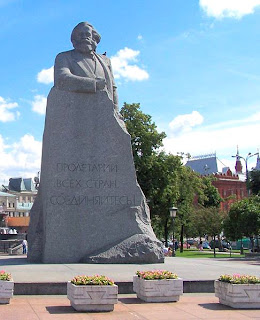
Ford was born july 30, 1863, on a farm next to a rural town west of Detroit, Michigan (this area is now part of Dearborn, Michigan). His father, William Ford(1826–1905), was born in Country Cork, Ireland.
 Ford's First vehicle : 1896 Ford Quadricycle W.Henry Ford seated
Ford's First vehicle : 1896 Ford Quadricycle W.Henry Ford seatedIn 1896, Ford attended a meeting of Edison executives, where he was introduced to Thomas Edison. Edison approved of Ford's automobile experimentation; encouraged by Edison's approval, Ford designed and built a second vehicle, which was completed in 1898.

Ford (standing) launched Barney Oldfield's career in 1902.
With the help of C.Harold Wills, Ford designed, built, and successfully raced a twenty six horsepower automobile in October 1901. With this success, Murphy and other stockholders in the Detroit Automobile Company formed the Henry Ford Company on November 30, 1901, with Ford as chief engineer. However, Murphy brought in Henry. M. Leland as a consultant. As a result, Ford left the company bearing his name in 1902. With Ford gone, Murphy renamed the company the Cadillac Automobile Company.Ford also produced the 80+ horsepower racer "999", and getting Barney Oldfield to drive it to victory in October 1902.

Henry Ford shocked the automotive world 60 years ago by doing the impossible : Mass-producing the V-8 engine. Here he is shown with his first "production" engine which is now displayed in the Henry Ford Museum in Dearborn MI. A brass tag on the first engine reads: "This is V-8 No. 1 motor. Hold for Mr. H. Ford."

This unusual camera shot shows Henry Ford (right) and Edsel Ford with their newest product, the Ford V-8 for 1937. The picture was taken at Dearborn during the newspapermen’s preview of the new car, which excited unusual interest because of its completely new appearance and the advent of the 60 horsepower V-8 engine, giving a choice of engine sizes.
 “When everything seems to be going against you, remember that the airplane takes off against the wind, not with it.”
“When everything seems to be going against you, remember that the airplane takes off against the wind, not with it.”- Henry Ford.
When Ford started the 40-hour work week and a minimum wage he was criticized by other industrialists and by Wall Street. He proved, however, that paying people more would enable Ford workers to afford the cars they were producing and be good for the economy.

Replica of shop where Henry Ford built his first automobile, Greenfield Village, Dearborn, Mich.

Ford Assembly Line, 1913

Ford Assembly Line, 1913

Henry Ford recieved the Grand Cross of the German Eagle from Adolf Hitler's Third Reich, presented by Karl Kapp, German consul-general of Cleveland (left), and Fritz Hailer, German consul of Detroit (right).

Edsel Ford, Charles Lindbergh, and Henry Ford pose in the Ford hangar during Lindbergh's August 1927 visit.

Ford's most successful aircraft was the Ford 4AT Trimotor — called the “Tin Goose” because of its corrugated metal construction. It used a new alloy called Alclad that combined the corrosion resistance of aluminum with the strength of Duralumin.

Ford's Ford...
A 1942 model, Mr. Ford had this car updated with many interchangeable 1946 ford parts, including 1946 front end sheet metal.

Ford's Ford's Dash.
This was the last of Henry Ford's personal cars and he used it up to his very last day, April 7, 1947. The leather upholstery and two-way radio indicate how much Henry Ford depended on this car to get about his empire and to maintain communications.

78-year old Henry Ford at the Wheat Harvest in Tecumseh, 1941.

Henry Ford with his wife and grandson (Henry Ford II). Henry Ford sits at the tiller of the first car he made, in 1896 when he was 33.

In ill health, he ceded the presidency to his grandson Henry Ford II in September 1945 and went into retirement. He died in 1947 of a cerebral hemorrhage at age 83 in Fair Lane, his Dearborn estate, and he is buried in the Ford Cemetery in Detroit.
He is credited with "Fordism", that is, the mass production of large numbers of inexpensive automobiles using the assembly line, coupled with high wages for his workers.
He is credited with "Fordism", that is, the mass production of large numbers of inexpensive automobiles using the assembly line, coupled with high wages for his workers.




















